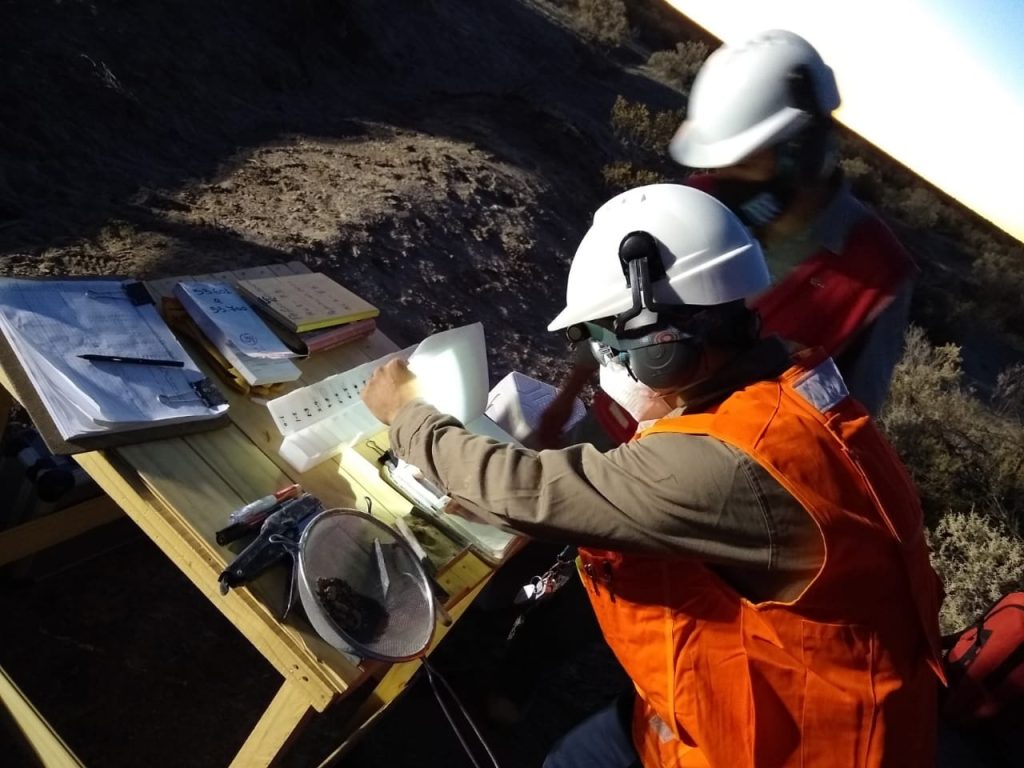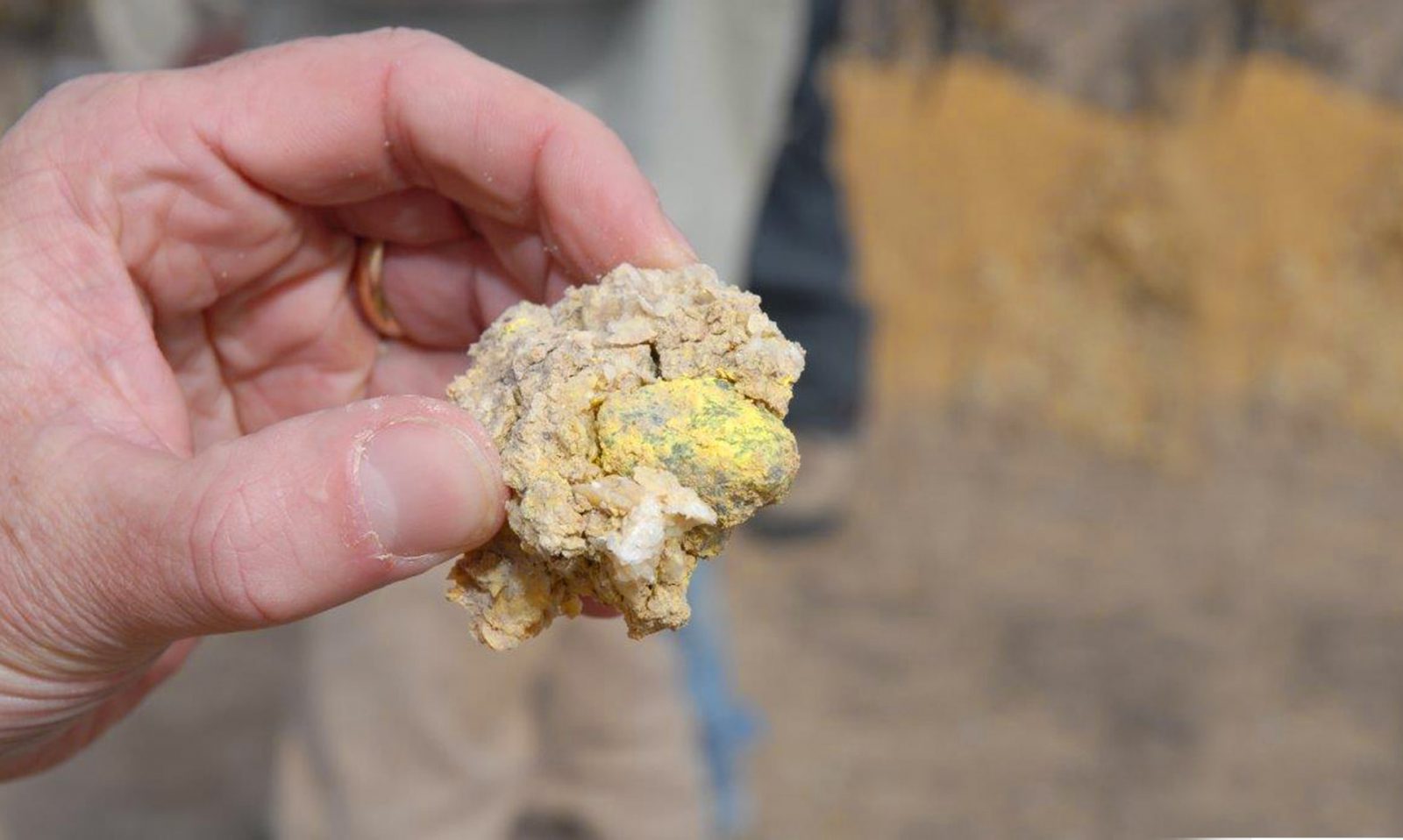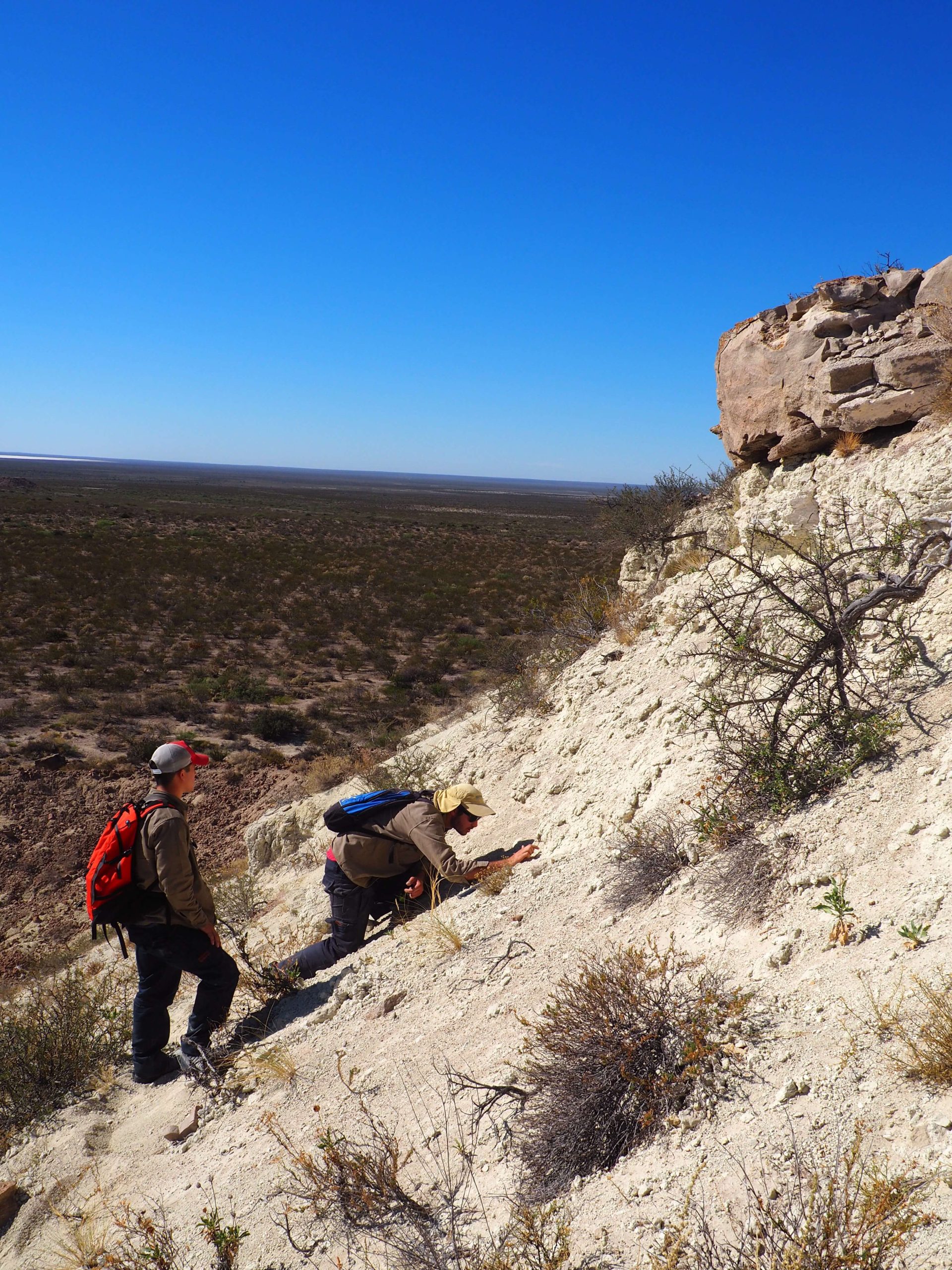Uranium: The nuclear bull with room to roam

By Resource World
Uranium is a pivotal resource as we transition towards more environmentally sustainable energy, serving as fuel for nuclear power plants that generate bountiful electricity without emitting any greenhouse gases. This reduces carbon emissions and mitigates against climate change effects. Furthermore, nuclear plants offer a reliable power supply that complements intermittent renewable energies like wind or solar.
Analysts are optimistic on the uranium market due to positive supply and demand fundamentals. Nuclear energy demand is increasing with new reactor constructions taking place across China and India. According to the World Nuclear Association, a 2.6% annual growth is forecasted over the next two decades. Supply-wise, uranium producers have not reached full capacity production, leaving exploration projects scarce following a decade-long decline for the uranium market. Additionally, the restart of Japan’s nuclear plants since the 2011 Fukushima disaster and its plan to increase nuclear power to 20-22% of its energy mix by 2035 are positive signs for the uranium market. As utilities’ inventories decline and contract coverage drops, they will be willing to accept higher contract prices to replenish their energy fuel stock, which in turn will lift uranium prices. There are a wide range of views on how high uranium prices could get in the future, with some predicting a spot price of up to US$100/lb.
Recently, the market has taken kindly to uranium after a bearish past. Statistics published by Cameco, one of the largest global providers of uranium fuel, show how the bearish past was typified by a max spot price of US$34/lb attained in May 2020. However, since Q3 of 2021, the uranium spot price has slowly begun to roar. In September of 2021, the uranium spot price hit US$42/lb, fast forwarding to the present day and the nuclear bull continues to trundle on, hitting valuations of US$55/lb in May 2023. This represents a significant increase in spot price compared to the 2020 figures. Analysts at Market Watch further speculate, commenting on the global Uranium market valuation attaining US$2,736.3 million in 2022, further expansion is predicted, forecasting a rise to US$3,398.5 million by 2028.
The future of uranium is being influenced by supply and demand dynamics and government policies. Uranium production has been affected by mine closures, and production and exploration cutbacks. This has led to a limited market supply, which could support higher prices. Government policies (such as those seen in Japan) aimed at reducing carbon emissions will likely increase investment in nuclear power and in turn drive up demand for uranium.
As a naturally occurring radioactive metal, uranium fuels nuclear reactors by splitting its atoms to generate heat. U3O8 or yellowcake is produced by processing uranium ore. According to GlobalData, Kazakhstan, the world’s leading producer of Uranium, accounts for 42% of global Uranium production, with the other largest producers being Canada (15%), Namibia (11%), Australia (10%) and Uzbekistan (7%). The bullish sentiment is further echoed by those at the forefront Kazatomprom (Kazakhstan’s national operator) announced in mid-2022 that it would be increasing its uranium output throughout 2023 and 2024 based on expected demand levels.
Canada boasts the world’s largest deposits of high-grade uranium, mostly located in northern Saskatchewan. Sandstone and conglomerate rock formations in Athabasca Basin make ideal hosts for these deposits due to being permeable nature and reducing environment, which allows migration and precipitation of uranium. Their geological characteristics – high-grade quality and proximity to surface make extraction more accessible and cost-effective than other global deposits. This provides a significant advantage for Canada’s uranium industry. Quickly scoping through the Canadian industry, the key players are:
Cameco Corp. [CCO-TSX; CCJ-NYSE], a major uranium producer with operations in Saskatchewan, plans to produce 33 million pounds of uranium in 2023 and increase to 36 million pounds in 2024, with an additional 18 million pounds coming from the McArthur River/Key Lake operation and 18 million pounds from the Cigar Lake mine. Cameco resumed production at its McArthur River/Key Lake operation in November 2022 and has increased its share in the Cigar Lake mine to 54.5%. The company also signed a commercial agreement with Energoatom to supply all of Ukraine’s nuclear fuel needs through 2035. CEO Tim Gitzel called 2022 a “transformative” year for the company.
Denison Mines Corp. [DML-TSX; DNN-NYSE] received approval from the Midwest Joint Venture (MWJV) to conduct evaluation work at its Midwest uranium project in Saskatchewan’s eastern Athabasca Basin. The project is jointly owned by Denison and French nuclear services firm Orano. Denison plans to collect deposit-specific information and complete preliminary engineering studies to assess the potential application of the ISR mining method. The Midwest Main and Midwest A deposits hold 39.9 million lb and 10.8 million lb of uranium, respectively. Denison’s 25.17% interest in the Midwest project equals about 17.3 million lb. of yellowcake.
Latitude Uranium Inc. [LUR-CSE], has closed its private placement, raising over CDN$12.5 million through the sale of subscription receipts. The funds will be used to support the acquisition of ValOre Metal’s Angilak property, which hosts an inferred resource of 2,831,000 tonnes grading 0.69% U3O8, equivalent to 43.3 million lb U3O8. Latitude Uranium is focused on uranium exploration and development projects in Labrador, eastern Canada, and holds 52 mineral licenses covering 152,825 hectares in the Central Mineral Belt and the Notakwanon project in northern Labrador.
Blue Sky Uranium Corp. [BSK-TSXV; BKUCF-OTCQB; MAL2-FSE] is a company that offers investors a rare window on advanced uranium exploration in a region of Argentina that is wide open for expansion and new discoveries. The opportunity also includes vanadium, a strategic metal in the United States that has applications in both steel and battery production.
A 2019 Preliminary Economic Assessment* (“PEA”) suggests that if the company’s flagship Amarillo Grande Project (AGP) was in production, the average life-of-mine all-in-sustaining cost (AISC), net of credits, could be US$18.27 a pound (U308). At that rate, operating costs could rank among the lowest on the planet.
“Our mission is exploring and advancing towards production a portfolio of uranium-vanadium projects with an emphasis on near-surface deposits that have the potential for near-term, low-cost production”, the company has said.
It is a scenario that sets up Blue Sky’s projects to potentially become Argentina’s first domestic supply of uranium and ultimately a net export of the nuclear fuel. Argentina has an advanced nuclear industry and ranks as the largest generator of electricity from nuclear energy in South America. But it has no domestic uranium supply.
Blue Sky’s exploration and development strategy is led by a highly experienced management team, that include CEO Nikolaos Cacos, and Chairman and founder Joe Grosso, who has been active in Argentina since the country opened its mining sector to foreign investment in 1993. Grosso has been inducted into Argentina’s Mining Hall of Fame, meaning his involvement lends an incredible competitive advantage to Blue Sky.
Using Grosso’s experience and connections, Blue Sky discovered a new uranium district in the Rio Negro Province in the Patagonia region of southern Argentina. The 100%-owned Amarillo Grande project (“AGP”) incorporates a series of new uranium-vanadium discoveries made along a 145-kilometre trend covered by 245,000 hectares of mineral rights. AGP consists of three major properties: Ivana, Anit and Santa Barbara.
 An NI 43-101 compliant PEA* indicates that the property’s Ivana Deposit hosts an inferred resource of 22.7 million pounds of U308 and 11.5 million pounds of V205 (28.0 million tonnes averaging 0.037% U308 & 0.019% V2O5 at a 100 ppm uranium cut-off).
An NI 43-101 compliant PEA* indicates that the property’s Ivana Deposit hosts an inferred resource of 22.7 million pounds of U308 and 11.5 million pounds of V205 (28.0 million tonnes averaging 0.037% U308 & 0.019% V2O5 at a 100 ppm uranium cut-off).
The PEA* envisages a surface mining operation, pre-production capital cost of $128.05 million and average annual production of 1.3 million pounds of U308, and a lifespan of 13 years with total life-of-mine production of 17.5 million pounds of U308.
AGP includes several major target areas over a regional trend, with uranium and vanadium mineralization in loosely consolidated sandstones and conglomerates, at or near surface. The area is flat-lying, semi-arid and accessible year-round, with nearby rail, power and port access.
Company officials are confident that there is more uranium and vanadium to be found on the AGP project. A detailed review and reinterpretation of over 15 years of geological data collected at the project identified four new areas with compelling targets with high potential for uranium and vanadium mineralization, similar in style to the Ivana deposit.
“Our current program aims to discover more uranium and demonstrate that the growth potential of this district can rank amongst the largest in the world,’’ said Cacos.
 Back in March 2023, the company launched a 1,200-meter RC exploration program at the Ivana East target, located 10 kilometres east of the Ivana deposit, in the southernmost sector of the AGP project.
Back in March 2023, the company launched a 1,200-meter RC exploration program at the Ivana East target, located 10 kilometres east of the Ivana deposit, in the southernmost sector of the AGP project.
“This target shows significant similarities to the geological environment that hosts the nearby Ivana deposit, representing a priority target for our goal of identifying a cluster of deposits in the area,’’ said Cacos.
He said drilling at Ivana East is a continuation of the staged exploration drill testing of four high priority targets close to the Ivana deposit, also including the Ivana North, Ivana Central, Cateo Cuatro. Ivana North and Central have had their initial drilling program completed. Drilling is planned for Cateo Cuatro. Once initial drilling is complete at all four targets, further work will focus on areas identified as having geological conditions most similar to those at the Ivana deposit, and the best prospects for discovery of new mineral resources that could be incorporated into future plans for advancing the Ivana deposit.
Anomalous uranium was reported in 30% of the 40 holes (1,591 metres) that were recently completed at the Ivana North target area.
At the Ivana deposit, advanced process design test work is underway. This year, leach testing on new bulk sample material recovered 96% of the uranium and 35% of vanadium.
Preparations are underway for testing the next step in the milling process, membrane filtration, in order to identify the best nanofiltration and reverse osmosis membranes, the company stated. Leaching of the remainder of the new mineralized bulk sample is also underway to provide solution for subsequent solvent extraction tests.
The data from the process design tests will be used in future engineering studies for the Ivana deposit.
On July 4, 2023, the shares were trading at $0.08 in a 52-week range of 21 cents and $0.065, leaving the company with a market cap of $17.4 million, based on 217.8 million shares outstanding.
The bullish Uranium global market trend appears poised for further substantial growth according to Citigroup analysts. Supply chain disruptions triggered by political instability resulting from war in Ukraine have significantly affected global Uranium supplies causing its price surge considerably higher than usual. The looming uncertainty surrounding Russia’s Uranium export chain only adds fuel to the fire but presents an opportunity for other players looking forward to producing clean and renewable sources of energy via improved nuclear technologies, which are bound to garner mainstream acceptance soon due to their lower emissions levels compared with fossil fuels.
It is becoming increasingly clear to western nations that nuclear power is the safest, cleanest, and most reliable way to produce electricity on a large scale. The construction of new nuclear reactors is underway in developing countries to meet their growing energy needs. The decade of decline for the uranium market means supply will not be able to keep pace with current demand. Uranium’s spot price may rise due to this shortage in supply. Nuclear reactors can only run on uranium. This creates a fully elastic market that is captive, making uranium an alluring investment opportunity.
*The PEA is preliminary in nature and is based solely on Inferred Mineral Resources that are considered too speculative geologically to have economic considerations applied to them that would enable them to be categorized as Mineral Reserves. Mineral Resources that are not Mineral Reserves do not have demonstrated economic viability and there is no certainty that the PEA will be realized.

